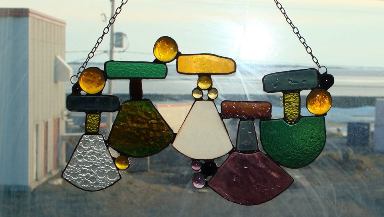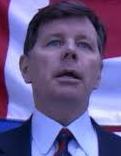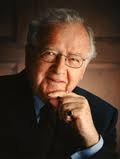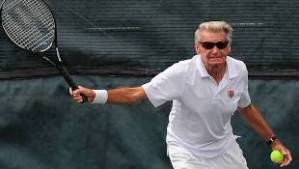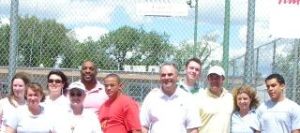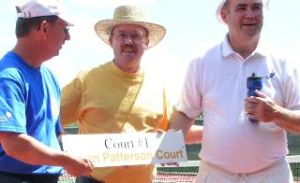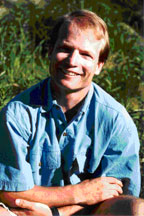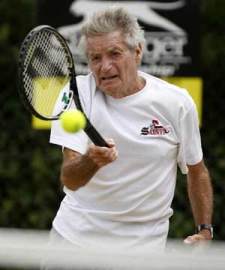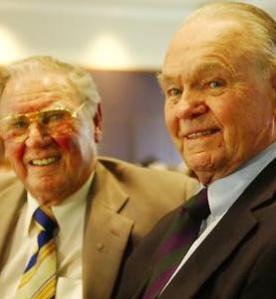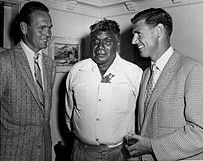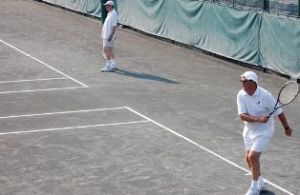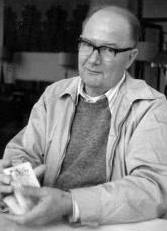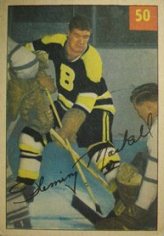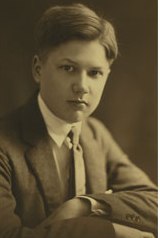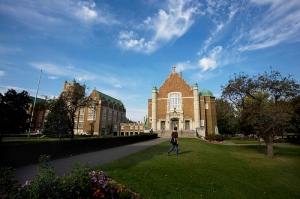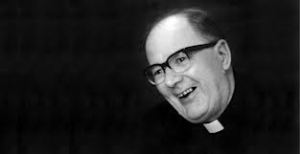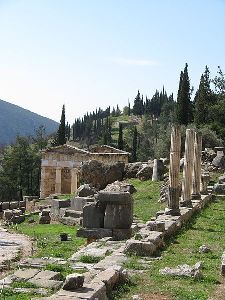 It was good to visit with family in the south for a while. Ottawa is south for anyone from the territories. But Kerrin knew she’d be going back. Pammy’s great4granddaughter hadn’t experienced Canada’s true north yet, the land of the Inuit. There are many northern peoples. There are nine aboriginal languages recognized officially by the NWT government that sits in Yellowknife. But the most northern of all are the Inuit, the original and enduring people of the polar region, who for countless generations until less than a lifetime ago endured privations and a nomadic existence in an unforgiving land. Kerrin wanted to know what Inuit village life was all about, the hunting and fishing, jobs, social life, entertainments, what the people ate. She was Qallunaat, to be sure, an outsider. But she hoped for the best. It started with a memorable first day at school, recorded in the diary she began when she got there but abandoned not long after when the art bug bit her.
It was good to visit with family in the south for a while. Ottawa is south for anyone from the territories. But Kerrin knew she’d be going back. Pammy’s great4granddaughter hadn’t experienced Canada’s true north yet, the land of the Inuit. There are many northern peoples. There are nine aboriginal languages recognized officially by the NWT government that sits in Yellowknife. But the most northern of all are the Inuit, the original and enduring people of the polar region, who for countless generations until less than a lifetime ago endured privations and a nomadic existence in an unforgiving land. Kerrin wanted to know what Inuit village life was all about, the hunting and fishing, jobs, social life, entertainments, what the people ate. She was Qallunaat, to be sure, an outsider. But she hoped for the best. It started with a memorable first day at school, recorded in the diary she began when she got there but abandoned not long after when the art bug bit her.
January 26, 2007
I’m going to teach again, this time in a small Inuit community on Ungava Bay. It is a very remote settlement – the only one on the east side of the bay. [Ed. note: Kangiqsualujjuaq, population 874, also known as George River, is in Nunavik, which is the virtually self-governing far northern region of Quebec.]
Flight from Ottawa to Mtl – Mtl to Kujjuaq to George River by Twin Otter. You really know you are flying when in a Twin Otter. It is cold, dark and very loud. The snow is blowing when we arrive. It is blowing, not snowing. This is something I will have to get used to. The wind is howling and whipping the outer lining of my western arctic parka about me. My coat snaps like a flag in a gusting northern wind. It is dark and relatively mild for this time of year, -8 when it should be -40.
January 27
The weekend is spent hunkered down in my dismally bare apt. It may take up to two weeks to get the meagre decorations and food supplies I have had sent up. I brought only what I would be willing to abandon if necessary. I have no intention of leaving before the end of June but some people only last a day and the school board won’t remove any belongings unless you’re here six weeks. I’m on a term position for the rest of the year. The students have been without a teacher for almost a month and I hurried to get here.
I am pretty much the last option though the last candidate. All others backed out soon after being hired, opting for less isolated settlements. But this is what I want to see — the communities. I regretted after being in Yellowknife fourteen years that I had never seen the communities. But I was thinking of the western arctic.
January 28
The wind howls eerily all weekend. I can see only rock and snow outside my window. Occasionally a snowmobile roars down the street. There are packs of beautiful looking but hungry dogs roaming constantly. When the wind dies and the town sleeps and the furnace stops, and the refrigerator, the silence is so complete your ears hurt for straining to hear a sound. Desolate is the only word for my first impression.
January 29
It’s Monday and my first day at school – though I have been given till Wednesday to prepare. After lunch Mark comes with unwelcome news. There was a suicide at lunch. I never met her though she will always remain in my memory as my introduction to life here. Her name was Celina. She was 17.
January 31
The quality of the snow here is unlike anything I have ever seen. Last night a wind came up and blew huge drifts of snow to new locations. I had finally found a solid path through to the school but it is now gone. It is impossible to tell where one might walk safely. My solid path of yesterday may be knee deep today. Even the Inuit are unsure. One asked me just yesterday if my path was solid and had his daughter follow me to school. Like desert sands the snow dunes shift. One foot from the path lies the possibility of a wrenched knee or twisted ankle. But when the path is set it is hard as packed earth. The force of the wind and the lack of moisture leave no space among the solid crystals and the snow is the density of cork. The children use machete type knives to build igloo type snow forts cutting and shaping snow blocks as easily as southern children shape plasticine.
The Weekend
I played poker with the cops and a few teachers on Friday night. It will be difficult to play with them as they care nothing about winning or losing. The cops are a young couple. She likes to do paint by numbers while he likes to cook. Neither of them were trained or had any experience when they were hired though he had worked for a time as a prison guard. They came up, were given guns and the way was pointed to the station. They are all alone working 24 hours a day seven days a week. Only one is on shift at any time. When a call comes in, the other joins in for the call. The officer not on duty gets paid three hours for the call. There have been none for a few weeks now – but they come in waves. There are supposed to be three police officers here but no one wants to come. After the game I saw noone from Friday evening till Monday morning.
Monday Feb 5th
My students are helping me piece together the story of the town. Their parents were born on the tundra in tents 40 years ago. Now half of the adults in the community are on welfare and half of the teenagers have dropped out of school. The few remaining students have little good to say about their former classmates.They are home watching television, drinking and smoking pot and neglecting the babies they start having in their teens. The students who have stayed will be the future leaders in the community.
Feb 6th
C. drove me to the municipal building after school to get my modem. She is young – maybe twenty and has an admin job at school. She went to school here all her life. “And I graduated.” She is proud and holds a good job. She missed work today. Giselle, in the classroom next door, made a drinking sign. Sunday night there had been a big booze delivery.
The town is restricted, not dry. Booze can be ordered from the south. One case of beer and four bottles of wine per month. Hard liquor was banned a month ago. The bootleggers are ecstatic. They will get $200 for a bottle of alcohol. A single beer regularly sells for $10 though $20 is not unheard of. Mostly everyone takes advantage of the lack of spirits when they have the opportunity to go south. Montreal is the port of call and a doctor’s visit is a gold mine when you can return with a suitcase of liquor.
Feb 7th
Road safety is not a concern here. Seatbelts, child seats, helmets are all of the south. Children as young as 11 drive snowmobiles pulling others on sled behind. Mothers and fathers drive kids to school on snowmobiles with cousins and neighbors piled 10 to a kamatik. Teens fly by in trucks with friends sitting on the sideboards in the bed. Today a truck pulled up beside two youngsters.They hopped up onto the rear bumper and held onto the tailgate and the truck moved off down the road. There are eight stop signs in town. These are new and result from an accident a few years ago at an intersection. These are the only street signs or traffic regulating devices in town.
Feb. 8
Crystal upstairs is having a hard time with one young boy – she teaches grade five. This guy – who is bigger than her – punched her in the face in the yard at school. This was after pushing her on the stairs, throwing boots at her, yelling at her constantly in class and in the halls to fuck off and die, you’re a whore, you’re a cunt etc. Crystal is upset. She is afraid to go out and now keeps her door locked.
The Students
Don’t get me wrong, most of the students are really great. The usual problems with teenagers exist of course but for the most part the students are lovely. However Philip was telling me that a month into school this year the kindergarten students were so out of control that the entire class was suspended for two weeks. A month later it was the grade twos. And there have been incidents of extreme violence – which is scary in a community where two year olds have access to unlocked guns and plenty of ammunition.
Feb. 9
Of course it isn’t really the kids fault. Many of them have very bad home lives. The parents are up gambling all night and sleep all day. They will gamble their whole cheque away in one night. There is no food and often times no one to take care of them. Two sisters are off school right now taking care of the house while their mother is away giving birth to yet another baby. They are the 15 and 16 year old caregivers to a house full of kids. They’ll be out of school for two weeks. It also keeps most of their friends from attending as everyone is over at their house all night.
Feb. 10
I have finally made an Inuit friend. Daisy. She is a janitor at the school and the mother of Louisa, one of the 3-4-5 class. She came to the door to see if I wanted to buy a broach Louisa made, an embroidered broach adorned with a hanging pair of sealskin mucklucks. It was well crafted and I bought it for $25.00. I thought it a good enough deal. It was a good thing I was on the phone or I might not have invited her in. She is the third person, though the first woman, who has come to the door trying to sell things. She was in and as we were chatting I invited her to stay for tea. She was here about an hour. She is delightful and we will go shopping on Saturday to the Co-op. We are going to shop for material and she is going to make an amouti type pouch for me to carry Molly in. I’m sure it will be expensive but I need one for her. I also need a kettle Daisy said. It will be my first shopping expedition to the Co-op though it is only five minutes walk at most.
The Dogs
Felix is in charge of maintaining dog control in town. Felix is actually in charge of lots of things. He is a big man around here and one of the best looking men I have ever seen. Every few months Felix will get a dog in heat tie it in the back of his truck and drive slowly through town luring the loose male dogs out to the dump. He then shoots them. Sometimes he takes the fur. Apparently the fur from black shiny dogs is quite good. According to his grandfather it is the best for wearing close to your face – it doesn’t freeze and stick to your skin.
Feb 13th
The kid who was hassling Crystal attacked her on the street last night. He ran up and punched her in the face as she was leaving the Northern store. Mark came and the cops (her best friends) but they say there is nothing they can do as he is only 11. I think they can. It is assault. If he had a gun or had set a fire they would have taken him in. But they say they need permission from the parents to try scare tactics and the parents – well they just shrug.
Feb. 14
I guess anyone can have access to guns. Yesterday I went to the Northern and there were two snowmobiles running outside both with shotguns leaned up against the seat. I wonder if they were loaded. No one needs permits here and two of my secondary4 students were out shooting ptarmigan at lunch on Friday just behind the school. I guess if ptarmigan are spotted they can go to the IPL teacher downstairs and get guns. I will be meeting one of the more violent students tomorrow. Monday week three. Apparently he was in my class the first day I taught it but didn’t stand out. He has been suspended ever since. We will see.
February 20
The kids are having a hard time with socials. English can be made relevant to almost anyone. And some kids are just really good at and enjoy math. But socials? Well. It is hard to make European Inventions and Exploration during the Renaissance relevant to grade nine and ten Inuit students many of whom are AAD or FAS. They just don’t care and I don’t blame them. And what does it matter to most of them if they graduate or not.This is where 97% of them will spend the rest of their lives. There is 50% unemployment and most of the boys want to drive the water truck when they grow up. The girls want to work at the daycare. There is certainly no need for an early-childhood education degree to work at the daycare here.
February 26
School is tough. The kids are capable but for the most part lazy. Two out of 13 did their family time-line project. But, they have been spoon fed for the past 8 years – and they are working in a second language and I must remember that. I am going to try to change my methods to more fun activities and attempt to be more project based. I can start with projects on different First Nations groups with the sec1’s. More movies, etc. etc. I am not going to do the math in Economics as I don’t know it and they don’t need it.
March 5
Daisy has had four children. The two girls she raised I believe – Nancy is 21 and works with the elders. Louisa is still in school. One of her boys died from meningitis at eight months – she said she let him go because the doctor said she could have more children. And she has a son Elijah. Daisy was in the avalanche and mentioned it three times while here. She is obviously still having a very hard time dealing with the tragedy. Jan 1st, 2000 I think [Ed. note: 1999]. An avalanche slammed into the school gym collapsing the wall. Eight people were killed and dozens injured. A chair flew at Daisy and hit her in the stomach – she has had problems ever since though there is nothing the doctors can do. I think she has been to Montreal numerous times – she mentioned the hospital a lot. She is 47 – same as me. What different lives we have led though she did attend Algonquin school at one point – she didn’t pass she told me. What with the culture shock and difference in schooling levels it is no wonder. When she was young she would travel by dog sled from Kujjuaq to Kangiqsualujjuaq with her parents. It would take two days and was lots of fun. Her parents are both dead now. She is from Kujjuaq originally but likes it better here. There is a bar there where she lost two brothers. One was murdered and the other sustained severe head injuries – from the way she talked the second is worse off than the first. I feel Daisy will be my needed link to the people here. And she said I will really like the fishing. The char are thick as flies in the spring and jump from the water after the bait. They are renowned for putting up a really good fight.
March 12
It is not unusual for kids to be wandering around the streets in the wee hours of the morning. The parents are partying or fornicating and they kick the kids out or don’t let them into the house. And there is no one to help.
Of course this is not always the case. Some are luckier. I met Susan’s mother at parent teacher interviews a week into my journey here. She saw my tattoo and asked if it hurt. I said not really. She immediately pulled off her coat and showed me her arm which was covered in bruises. It looked bad. I asked her how it happened. She said she was drunk and fighting. But she is kind and caring and at least makes it to parent-teacher interviews. Though, as she approached down the hall the teacher next door hurried over to me and whispered to be very careful about what I said about Susan. If the mother hears anything bad she will yell and yell at her. I was glad to be warned though as far as I was able to tell at that point Susan was a lovely girl. On task and trying hard at school.
March 19
I moved to the beach – there is a view to die for. It is on a bay just up the George River from Ungava Bay with mountains in the background – spectacular is the only word that comes to mind. There are lots of kids around and I like that. What I don’t like is them looking in the windows and trying to get Molly worked up. They bang on the window and bark at her and ask to come in. And they bang on the door and run away. Kids! But I am not going to let them in. I will ask my kids down at times perhaps but not all the kids off the street.
March 26
They are a very pretty people – for the most part. The kids are really cute but at this time of year their noses drip snot and they often have sores from being sochapped. Their lips are terribly cracked and peeling.
Life is very tough for a lot of the kids. Many are adopted by grandparents or aunts and uncles. Many are abused either physically or emotionally. The top priorities are drugs and alcohol. Families on welfare are given food coupons to ensure not all the money is spent on gambling and drugs. The houses are supplied but many are without beds, fridges etc. though every home has a television. A young man came to the door the other day selling a pendant of a dancing polar bear. He said he was from out of town and staying at a house where there was no food. He said the kids were hungry. My students said he was lying – he just wanted a joint. Nice pendant though. I am going to give it to Chris if he likes it. I am also going to try to get a market going for some of the kids’ artwork – ulus and carvings.
March 27
There used to be a meat factory here. Isabelle said they killed all the caribou. They thought it was the George River herd but it turned out to be a sub herd. They are all gone. Too bad – caribou is a specialty high-end product down south and in Europe. They could make a small fortune if they worked it properly.
March 28
A. and C. are the biggest challenges in terms of behaviour.
 Once she caught the beat of the place, Kerrin got a kitchen going to provide hot, nutritious meals to staff and students, as well as cater special events for the town. This CanTeen raised thousands of dollars for school and community activities, including a grad trip to Montreal, food baskets for needy families at Christmas and T-shirts featuring the new school logo for all the students.
Once she caught the beat of the place, Kerrin got a kitchen going to provide hot, nutritious meals to staff and students, as well as cater special events for the town. This CanTeen raised thousands of dollars for school and community activities, including a grad trip to Montreal, food baskets for needy families at Christmas and T-shirts featuring the new school logo for all the students.
As in Yellowknife, where she took turns as clown and face painter at festivities and actor/director in community theatre, she was an after hours dervish. In some ways, this extra-curricular activity touched youth who were not making it in a system imported from the south, modified though it was for Inuit cultural imperatives. Nine out of ten Inuk students in Nunavik are behind grade level when entering high school (the rate for the rest of Quebec is less than two out of ten). Four out of five will not graduate.
At the edge of the earth where global warming strikes first and foremost, with strategic world players all staring intently at resources and passages in places where none but the Inuit have ever lived, scenarios for the future become monumental and complex. But in real time, on the frozen ground, it’s the kids who can take it and make it through who will make a difference, one Inuk at a time. Some will make the thousand year leap from where their grandparents were to where their own children and grandchildren must live. These are going to be increasingly important people as the century moves on and the world closes in. The Inuit will need them. Canada will need them.
 Kerrin remained in Kangiqsualujjuaq for five years. She then took a turn as den mother in a group home for foster children in Kujjuuaq, the principal town of Nunavik. She was interested and involved in looking after Inuit children who fall through the usual safety net of parents, family and friends. These are the neediest among a people struggling to find a way between a harsh life at the edge of survival and whatever is coming with the Qallunaat. After her grown daughter, Olivia, returned to Yellowknife, where she’d been brought up and educated, Kerrin took in a seven year old girl who’d had a frightful beginning involving parental murder and serial abuse through more than a dozen uncaring placements.
Kerrin remained in Kangiqsualujjuaq for five years. She then took a turn as den mother in a group home for foster children in Kujjuuaq, the principal town of Nunavik. She was interested and involved in looking after Inuit children who fall through the usual safety net of parents, family and friends. These are the neediest among a people struggling to find a way between a harsh life at the edge of survival and whatever is coming with the Qallunaat. After her grown daughter, Olivia, returned to Yellowknife, where she’d been brought up and educated, Kerrin took in a seven year old girl who’d had a frightful beginning involving parental murder and serial abuse through more than a dozen uncaring placements.
It’s not a legal adoption. Qallunaat don’t get to adopt Inuit children. Yet in everything but law she’s part of the family now (11 years old in 2013), an Inuk great5granddaughter for Pammy. And more fuel for Kerrin’s northern passion. After a year in Kujjuuaq, a rough and unruly frontier town, the two of them and Molly were off to the other side of Nunavik. She’d be teaching there in Umiujaq, a village on Hudson Bay. On arrival she wrote, “Kangiqsualujjuaq is a metropolis by comparison.”
The following links will bring you to Part 1 of this series, Yellowknife, Part 3, Umijuaq and Part 4, True North




